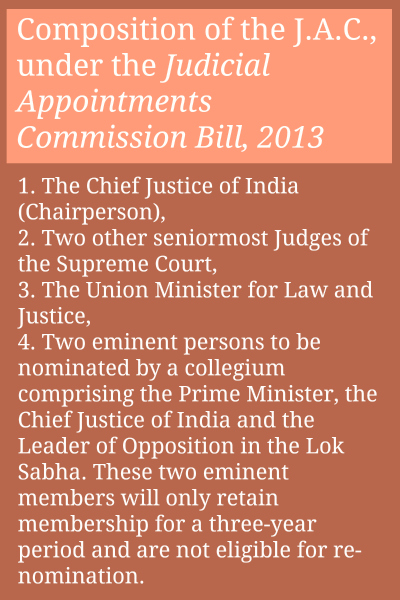 Conciliation as a method for resolving complaints of sexual harassment at the workplace has come in for much criticism. The Sexual Harassment of Women at the Workplace (Prohibition, Prevention and Redressal) Bill, 2010 (“2010 Bill”), which offered this option in Section 10, was criticised for instance, in the Report on the Committee on Amendments to Criminal Law, 2013 chaired by the late Justice J.S. Verma (“Verma Committee Report”) and the report by the Standing Committee on Human Resource Development, 2011 (“Standing Committee”). Despite this, the Sexual Harassment of Women at the Workplace (Prohibition, Prevention and Redressal) Act, 2013 (“Sexual Harassment Act”) retained the provision with one minor change.
Conciliation as a method for resolving complaints of sexual harassment at the workplace has come in for much criticism. The Sexual Harassment of Women at the Workplace (Prohibition, Prevention and Redressal) Bill, 2010 (“2010 Bill”), which offered this option in Section 10, was criticised for instance, in the Report on the Committee on Amendments to Criminal Law, 2013 chaired by the late Justice J.S. Verma (“Verma Committee Report”) and the report by the Standing Committee on Human Resource Development, 2011 (“Standing Committee”). Despite this, the Sexual Harassment of Women at the Workplace (Prohibition, Prevention and Redressal) Act, 2013 (“Sexual Harassment Act”) retained the provision with one minor change.
Criticism for conciliation as a method of resolving sexual harassment complaints
Monetary compensation is the most common conciliation settlement. Section 10 of the Bill, by not excluding monetary compensation, indirectly created a legal provision that permitted the accused to bargain against punishment. The Standing Committee pointed out that there was a real danger of conciliation becoming a tool for ‘legal extortion’ and that ‘monetary settlement’ trivialised the crime of sexual harassment.
The provisions were also not clear on many aspects. There was no distinction between a minor offence and a major offence. An apology may be acceptable in case of a minor offence but not for more serious offences. The Standing Committee reported that such uncertainty could encourage repeat offending.
There were also concerns about the high possibility of misuse. Employers could misuse the provision to coerce the aggrieved woman into settling or even cause her to withdraw her complaint.
 The Verma Committee Report, which declared the entire Bill to be unsatisfactory, said that conciliation was “only another way of undermining a woman’s dignity” and that it would not help achieve the object of the Bill, which was to ensure that “not even an imperceptible influence of any gender bias is felt against the female workforce either in the performance of their duties or in their career progression”. Such a procedure would only add to “the myriad pressurizing influences that are brought to bear upon women in our society may act to disable her from pursuing a valid complaint.”
The Verma Committee Report, which declared the entire Bill to be unsatisfactory, said that conciliation was “only another way of undermining a woman’s dignity” and that it would not help achieve the object of the Bill, which was to ensure that “not even an imperceptible influence of any gender bias is felt against the female workforce either in the performance of their duties or in their career progression”. Such a procedure would only add to “the myriad pressurizing influences that are brought to bear upon women in our society may act to disable her from pursuing a valid complaint.”
Justifications for retaining conciliation
The Bill had in fact, specifically provided that the complaints committee could consider settling the matter through conciliation only at the request of the aggrieved woman. So it had not overlooked the need to safeguard an aggrieved woman’s right to seek justice. An aggrieved woman may settle the matter through conciliation instead of the inquiry process by the Internal Complaints Committee, only if she wants to.

As far as serious offences go, victims would not opt for conciliation, which is only an option before the aggrieved woman. The Criminal Law Amendment Act, 2013 defines sexual harassment as a crime, so the victim can resort to filing a complaint under the Indian Penal Code, 1860 for serious offences. Employers are also bound by law to provide all assistance to aggrieved women if they want to file a criminal complaint. Further, under the proviso to Section 11(1), even after a settlement by conciliation, an inquiry can be initiated if the respondent has not complied with the terms of the settlement. Clearly therefore, there are safeguards to protect an aggrieved woman who has the option to settle the matter through conciliation from undue pressure or harassment from her employer. Finally, the only change to Section 10 when the Sexual Harassment Act was enacted in 2013 was the insertion of a proviso clearly stating that monetary settlement cannot be made the basis of conciliation, thereby keeping all the concerns of misuse and trivialisation at bay.
Thus, even though conciliation was initially seen as an inappropriate means of settling complaints of sexual harassment, the provision of the option is not all bad. It simply provides one more way of settlement along with other established procedures. Under the law, the offence of sexual harassment may even occur unintentionally. In such cases, conciliation may just be the perfect option for an aggrieved woman who prefers a quick remedy like an apology from the respondent without the hassle of inquiry reports and such.
Tenzin Namdol is part of the faculty on myLaw.net.






